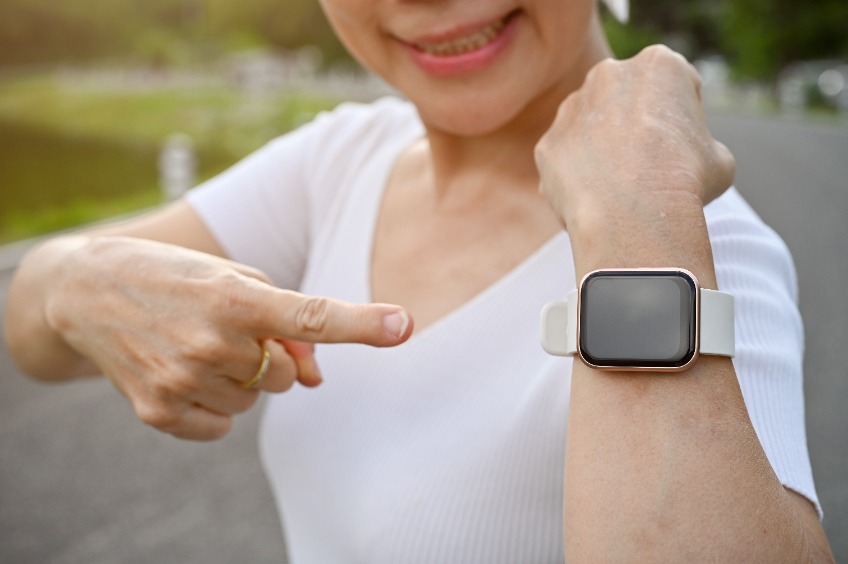How Accurate Is Polar Watch Heart Rate Monitoring? Does It Work?

There is no official measurement for how accurate heart rate monitors are, but some watches certainly work better than others. Polar has been in the heart rate monitoring game for years, and the Polar H10 is considered one of the best monitors you can buy. So, how do their watches stand up?
Polar Watches are among the more accurate wrist-based heart rate monitors. They use a combination of their optical heart rate sensor and skin sensors to measure heart rate in a way that cuts out bad data when moving the watch. It is accurate enough for fitness use and basic 24/7 monitoring.
If you are looking for a new fitness watch or a monitor for health reasons, we’ll go over what makes these watches work, which ones are best, and what your other options are. Keep reading to find out if these watches are a good choice for you.
How Do Polar Watches Measure Heart Rate?
Polar Heart Rate Monitors use optical heart rate sensors to give you heart rate data. Optical HR sensors work by flashing a bunch of different LEDs onto the skin under the watch and then measuring how much light comes back to the sensor. This is effective because of how the blood flows through your skin.
When your heart beats, it forces newly oxygenated blood through the arteries and then into the capillaries in your tissues, including the skin. As new blood comes into the skin, it makes it just a little bit darker as the blood flows through, after each beat, the pressure decreases and the blood flows out of the skin. The skin without the blood appears a little bit lighter, but it is enough for the sensor to tell the difference.
The sensor and the computer in the watch are then able to interpret that data to show you your heart rate. This technology has gotten pretty good, but it does have some limitations. Because of how the method works with measuring changes in the reflection from the skin this method is not as effective for people who have darker skin or tattoos where the monitor is going to be worn.
The sensors are also not very accurate during intense sports and when lifting weights. When you are participating in sports, for example, the watch is getting moved a lot, and when you lift weights, this causes you to flex your arms a lot and changes the position of the watch and the blood flow in the area.
However, some watches go above and beyond when it comes to heart rate tracking. Polar watches with Polar Precision Heart Rate Tracking also have a skin sensor on the bottom of the watch. It measures your heart rate when the watch has full contact with the skin and doesn’t measure your heart rate when there is no skin contact. This helps control some of the problems that come with optical heart rate tracking.
Which Smartwatch is Most Accurate for Heart Rate?
The most accurate Polar watches for monitoring heart rate are the Vantage V and the Pacer Pro. These devices have the most features of the smartwatches sold by Polar. The Pacer Pro also tested better in a test run by the YouTuber The Quantified Scientist.
Most of the Polar watches use the same Precision Prime heart rate sensors, so you will actually get similar results with all of them. Some of how well the sensors work comes down to fit, so make sure that your watch is snug when you wear it.
The best option for heart rate monitoring is the Polar H10, which we discuss below.
Is the Polar Watch Heart Rate Monitor Better than Apple Watch?

There are not a lot of peer-reviewed studies out there proving definitively which of the smartwatches is the best, and a lot of trackers change every year with new models and software updates, so this section can be taken with a grain of salt.
That said, the Apple Watch has one of the best HR monitors in a watch right now. It also uses its own optical heart rate sensors, like the Polar watches. According to the study done by The Quantified Scientist, the Apple Watch scored better than the Polar watches.
Where these watches differ though is in their overall fitness tracking. Apple Watches are first and foremost smartwatches. They are made to do some of everything you could want from your watch and has a divided focus. The Polar watches are fitness trackers first and smartwatches second.
Many users that purchase their watches for fitness really like the fitness programs that are included in the Polar devices and feel that the Apple Watch doesn’t offer as much when it comes to fitness.
Another thing to consider is battery life. The Apple Watch only gets about 18 hours of battery life, which means that at some point in a 24-hour period, you’ll need to take it off and charge it. Meanwhile, the Polar watch can last up to 4 days (96 hours), giving you multi-day periods where you can track your heart rate while asleep and awake without removing it.
For fitness-focused people, the Polar watch may be the more desirable choice, but if you just want to track the heart rate data as you go about your day, the Apple Watch may be more accurate.
Is the Polar H10 Accurate?

The Polar H10 is one of the most accurate heart rate monitors out there. The Polar H10 is a chest strap rather than a wrist-based heart rate monitor, and it gets great reviews.
Chest strap heart rate monitors like the H10 have been shown to be much more accurate than watches. Because of their location on the body, chest-mounted heart rate monitors are able to monitor the electrical activity from the heart rather than rely on the optical HR sensors that the watches use, leading them to be more accurate, especially in more active situations and for those with darker skin.
The wrist is also a very dynamic location on the body while being active and is moved a lot, making it not ideal for tracking your heart rate. The reason that wrist-based monitors are so popular is that they tend to be more comfortable to wear all day long and can double as a smartwatch.
If you have a heart condition that requires heart tracking or you want to be as accurate as possible for other reasons, you should really consider getting the Polar H10 for workouts and only rely on the watches for other parts of the day when tracking your heart rate isn’t as crucial.
